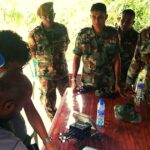You hit the right-click button on your mouse and a tiny menu appears. On this menu appears an option called print. A few additional clicks later and within a few seconds you have a copy of this article on a piece of paper. This is a testament to how far 2D printing has come. However, 3D printing, on the other hand, is a complex beast on a completely different level. Across the world, there are many companies trying to tame this beast. One such company is in Sri Lanka. Its name is RCS2 Technologies and it wants to make 3D printing simple and make the world smarter. They aim to do so with their own brand of Sri Lankan 3D Printers: Thrimána.
The origin story of RCS2 Technologies
Rajitha De Silva gave birth to RCS2 Technologies in 2015. The company was born with the simple mission of introducing new products. This is why they started designed and built their own CCTV system. Unlike most CCTV systems, this one is a plug and play system. In other words, there’s no fancy installation needed. Just place the cameras, connect the setup box to a monitor, and you’re good to go.

They’re also launching their own line of smart thermometers. Aimed at parents, these thermometers would deliver temperature readings to your smartphone. However, if you were to only examine these products, then you would only be scratching the surface of RCS2 Technologies. Their most exciting product is what they are famous for: Thrimána, which is their very own brand of 3D printers.
Thrimána: The 3D Printers built by a Sri Lankan company
In Sri Lanka, there are few companies that use 3D printers. The ones that do usually get their products from foreign markets. Nonetheless, that didn’t deter RCS2 Technologies from building Thrimána. But where were these Sri Lankan 3D printers born? Inside the Research and Development Division of RCS2 Technologies.

After much trial and error, the first Thrimána printer was born in 2016. Almost immediately after it was born, RCS2 Technologies wasn’t shy of showcasing it at 3D Print India, the Jaffna Trade Fair, Infotel 2016, and other trade fairs they attended. Despite the small market, the company formed a Memorandum of Understanding with the University of Colombo. This goal of this partnership was to enhance and make improvements in 3D printers in Sri Lanka.
Today, the Thrimána lineup features four different 3D printers. Two of these printers are aimed at general users and hobbyists while the other two printers are aimed at heavy industrial use. The 3D printers aimed at general users and hobbyists are Thrimána DIY and Thrimána Mini. The 3D printers designed for industrial use are Thrimána Plus and Thrimána Max. These industrial printers are larger than both the DIY and Mini models and feature additional nozzles to help print faster, with higher resolution, and more advance features enabling the client to print more complex 3D models.
Thrimána in action
While the partnership between RCS2 Technologies and the University of Colombo is currently in research stages in designing and developing the current technology, the market was still tiny. Thus, RCS2 began investing heavily in helping educate the masses about 3D printing and help the market grow. And so they began touring the country introducing 3D printing to Sri Lanka. The most notable of these was when they introduced the technology to students in Batticaloa and Colombo at a workshop organized by ICTA.

However, while they are building their own 3D Printers, RCS2 Technologies has no interest in becoming a 3D printing service. Nonetheless, that doesn’t mean they don’t go out of their way to help create 3D printouts of products for any interested clients. In the event a client approaches them asking for a Thrimána printer, RCS2 first asks what kind of products the client wants to create with 3D printers. Afterward, the team does rigorous testing across the different models to identify the best Thrimána printer that would meet their needs.
This is a lot of effort on the part of RCS2 Technologies, but they do so to ensure their clients walk away happy and confident with their purchase of a Thrimána 3D printer. And while the Sri Lankan market is small, they do have a few large corporate clients. A notable example would be at the University of Sri Jayewardenepura where Thrimána 3D printers are used as part of their research into robotics.

Similarly, the Center for Research & Development at the Ministry of Defense also utilizes Thrimána printers for projects that are classified. Additionally, the Thrimána 3D printers were also utilized by Asiri De Silva and his team to build their product: SureCash that was seen on Kotiyak Vatina Adahasak Season One. These are but some of the caliber of clients interested in the 3D printers designed and built in Sri Lanka. There are many more clients in a variety of industries ranging from architecture to medical applications that also use Thrimána 3D printers.
What’s next for RCS2 Technologies and Thrimána?
RCS2 Technologies is still a young and budding Sri Lankan startup. As such they still face heavy challenges, especially when it comes to selling their products to the masses. Nonetheless, that isn’t stopping them from considering expansion plans outside Sri Lanka to obtain foreign clients. But at the same time, they haven’t forgotten the home market.
Currently, they are working towards introducing a new 3D printer to the Thrimána lineup. This would be a basic 3D printer the size of a mini PC that would help introduce 3D printing to schoolchildren. The journey is long, but RCS2 continues to move forward one step at a time to tame the complex beast that is 3D printing.






GIPHY App Key not set. Please check settings